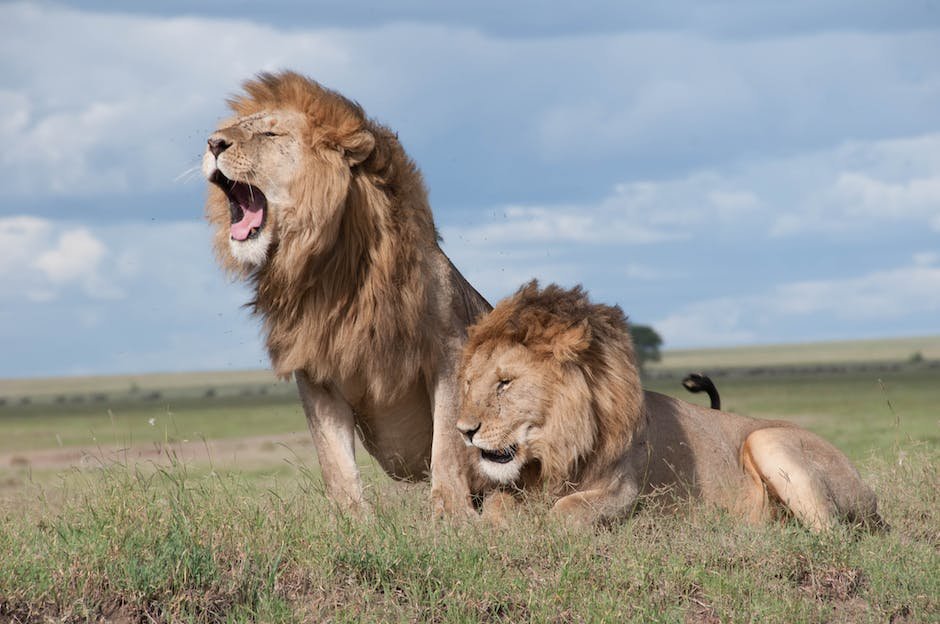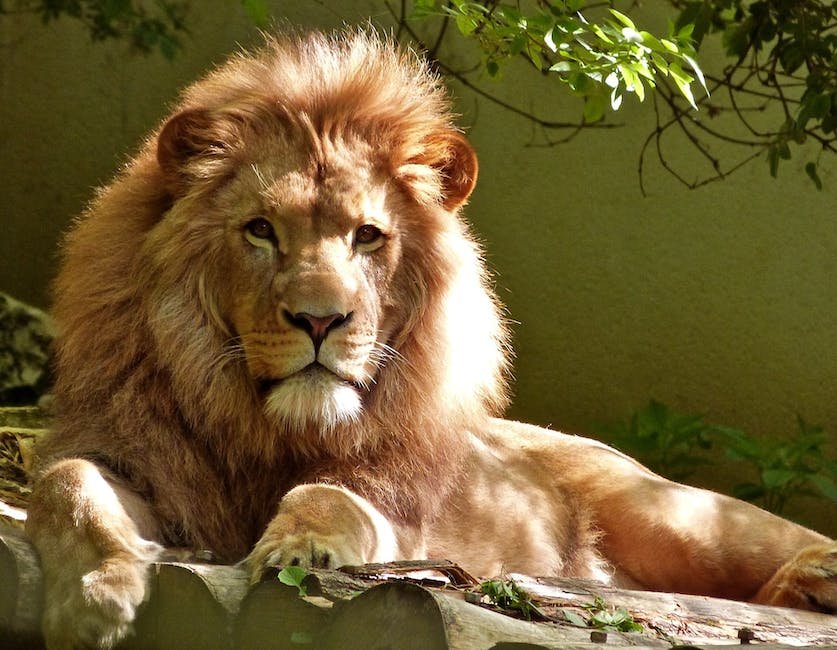Contents
The cave lion was a large felid that lived in Europe and Asia during the Pleistocene epoch. It was the parts of Eurasia that now correspond to Denmark, Sweden, Belgium, France, Spain, Poland, Germany, Russia, Kazakhstan, Iran, and India. The cave lion probably went extinct about 13,000 years ago.
The Cave Lion was a large animal that lived in Europe and Asia during the Ice Age. It is thought to have been the most common big cat in those areas during that time. Cave Lions probably looked a lot like modern Lions, except that they were a bit larger and had longer manes.
What kind of animal was the cave lion?
Cave lions were large, carnivorous felids that lived in Eurasia during the Pleistocene epoch. These animals were either subspecies of the lion or distinct but closely related species, depending on the authority. The most well-known subspecies or species is the Panthera spelaea, also known as the Eurasian or European cave lion. Cave lions went extinct around 13,000 years ago, likely due to a combination of factors such as climate change and hunting by humans.
The cave lion is a true lion according to a research done by comparing the genetic sequences from modern lions, leopards, jaguars, snow leopards, tigers, clouded leopards, and domestic cats. The cave lion is the closest extinct relative of the lions that still prowl around Africa and India today.
Why is it called a cave lion
The Eurasian cave lion was a voracious predator of the cave bear (Ursus spelaeus). In fact, this cat received its name not because it lived in caves, but because numerous intact skeletons have been found in cave bear habitats.
The European and English cave lion was a variety of lion that was believed to be extinct. However, remains of this animal have been found in cave systems throughout Europe and England. It is thought that the cave lion was a separate species from the existing lion, but further study is needed to confirm this.
Are cave lions bigger than tigers?
The Cave Lion was a massive cat that lived during the Ice Age. Standing 5 feet tall and measuring 115 feet in length, this animal weighed more than 318 to 363 kg, making it the largest cat that has ever existed. Slightly bigger than tigers, the Cave Lion was an impressive creature that would have been a formidable opponent for any predator.
Panthera spelaea, also known as the Eurasian cave lion, European cave lion or steppe lion, is an extinct Panthera species that most likely evolved in Europe after the third Cromerian interglacial stage, less than 600,000 years ago. The cave lion was one of the largest felines that ever lived, along with its close relative, the Panthera leo spelaea. It is estimated that the cave lion was about 30% larger than the African lion, with males weighing up to 550 kg (1,212 lb) and females up to 400 kg (880 lb). The cave lion was sexually dimorphic, with males being significantly larger than females.
The cave lion is known from over 400 cave paintings, which date from the Late Pleistocene up to the Holocene epoch. The majority of the paintings are from France and Spain, with smaller numbers from Italy, Germany, Russia and Romania. The cave lion was a popular subject for Paleolithic artists, and was often depicted hunting or fighting other animals.
The cave lion was probably a scavenger as well as a predator, and would have preyed on large animals such as bison, mammoth, rhinoceros and horse. It is
Can cave lion beat Siberian tiger?
There are a few key reasons why Siberian tigers are larger and more powerful than lions. First, tigers are built for power with their massive bodies and muscular limbs. Their powerful bites can crush bones and their sharp claws can tear flesh easily. Secondly, tigers are very good at ambush attacks. They are stealthy and can approach their prey quickly and quietly. Finally, tigers have more endurance than lions. They can run long distances and maintain high speeds for a longer period of time.
The American lion, also known as the Rocky Mountain lion, was a large felid that lived in North America during the Late Pleistocene period. It was about 25% larger than the modern lion, making it one of the largest known felids. Its fossils have been excavated from Alaska to Mexico, and genetic analysis has shown that it is closely related to the Late Pleistocene Eurasian cave lion (Panthera spelaea).
Who will win cave lion or Bengal tiger
A lion might have a tough time against a tiger in a fight! Scientists say that in a fight between a Bengal tiger and an African lion, there is a 90 per cent chance that the tiger will win. A tiger is slightly faster than a lion, arguably more ferocious, and more agile. A tiger is also 5 per cent taller and 8 per cent heavier than a lion. So the next time you see a lion, remember that he might be king of the jungle, but a tiger might just be king of the beasts!
In an interview with the Siberian Times, paleontologist Albert Protopopov stated that there is a very realistic chance to recreate cave lions, and that it would be a lot easier than to clone a woolly mammoth. Protopopov believes that this is due to the fact that cave lions only went extinct around 10,000 years ago, as opposed to the woolly mammoth which went extinct around 4,000 years ago. This means that there is a much greater chance of finding intact DNA for cave lions.
How big was a cave lion?
The cave lion was a large Felidae that lived in Europe and Asia during the Late Pleistocene, from about 115,000 to 10,000 years ago. It was closely related to the modern lion (Panthera leo), but not to other extinct felids, such as Dinofelis and Smilodon.At 15 meters high at the shoulders and at 4 meters in length, it was larger than modern lions of today and slightly bigger than modern tigers.
Cave lions split from their African kin about 500,000 years ago and evolved slightly different characteristics. For example, cave lions didn’t have manes, based on cave art from Europe.
Where do cave lions live
Cave lions were one of the many large cats that lived during the Ice Age, along with saber-toothed tigers, jaguars, and leopards. They were one of the few predators that could take on a cave bear and have been known to prey on young cave bears.
The cave lion was a large, extinct cat that lived in Eurasia during the Ice Age. Unlike modern lions, cave lions did not have a mane. However, they had thick fur similar to that of the modern Siberian tiger. They might have also had faint tiger-like stripes with the color of their upper body likely varying from ochre-tinted gray to dark ochre brown.
What caused cave lions to go extinct?
Prehistoric humans may have hunted cave lions to extinction, fossils indicate. Cave lions might have been hunted to extinction by humans, according to researchers who say they have found evidence that the creatures were skinned for their pelts 16,000 years ago. The finding adds to evidence that humans were responsible for the demise of several large animals soon after they arrived in Europe.
It is a mystery why the American lions went extinct around 10,000 years ago. It is possible that human actions and climate change played a role in their demise. We may never know for sure what happened to these magnificent creatures.
What was the first lion on earth
Fossil evidence suggests that the earliest lion-like cat (P l fossilis) appeared at Laetoli in Tanzania in East Africa during the Late Pliocene (50–18 million years ago). This suggests that the origin of the species was in Africa.
The Barbary lion is one of the largest lion subspecies. Adult males can weigh up to 500 pounds and have a dark mane. The lions once roamed throughout northern Africa, from Morocco to Egypt, but have been wiped out due to human activities. Many were killed by gladiators in Roman times.
Did humans hunt cave lions
The cave lion was a large, predatory cat that lived in Europe and Asia during the Pleistocene epoch. Although it was once a common species, it went extinct around 13,000 years ago.
There are several theories about why the cave lion became extinct, but one of the most likely is that humans hunted them to extinction. With the addition of this new study, Cueto says, evidence is also building that humans directly hunted cave lions. “Hunting was not the only cause for cave lion extinction, but it likely played a significant role in addition to other human-related activities,” she says.
Sparta is an incredible discovery and a remarkable example of the well-preservedIce Age animals that can be found in the Siberian permafrost. Her whiskers are still intact, and she provides a wonderful glimpse into what life was like for these creatures 28,000 years ago.
Did cave lions eat cave bears
Bocherens’s analysis of cave lion diet reveals that they ate bear cubs occasionally, but their favorite food was reindeer. Reindeer consume massive quantities of lichen, and Bocherens and his team believe that the cave lions did as well. This is similar to the diets of modern lions, which also consume significant amounts of lichen.
Asiatic wild dogs, also called dholes, may occasionally prey upon tigers. However, these rare attacks are typically countered with drastic losses to the dholes’ pack. Humans remain the greatest threat to all tiger populations.
Final Words
The Cave Lion was a large carnivorous mammal that lived in Europe and Asia during the late Pleistocene period. The average Cave Lion was about 3.5 meters long and weighed up to 600 kilograms. The Cave Lion had long, thick fur that was often reddish-brown in color. The Cave Lion was an apex predator and its main prey were large herbivores such as bison, elk, and woolly mammoths.
The following is a conclusion for the topic “What is Cave Lion Animal”:
The cave lion was a large, tawny-colored lion that lived in Europe during the Upper Paleolithic period. It was significantly larger than its modern counterpart, weighing up to 800 pounds. The cave lion was a fierce predator, stalking and killing large game such as mammoths and bison. Unfortunately, the cave lion went extinct around 10,000 years ago, likely due to a combination of climate change and human hunting pressure.

0 Comments